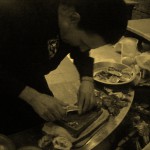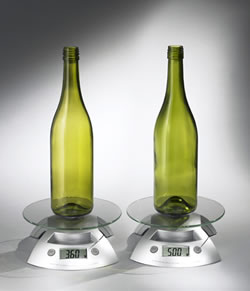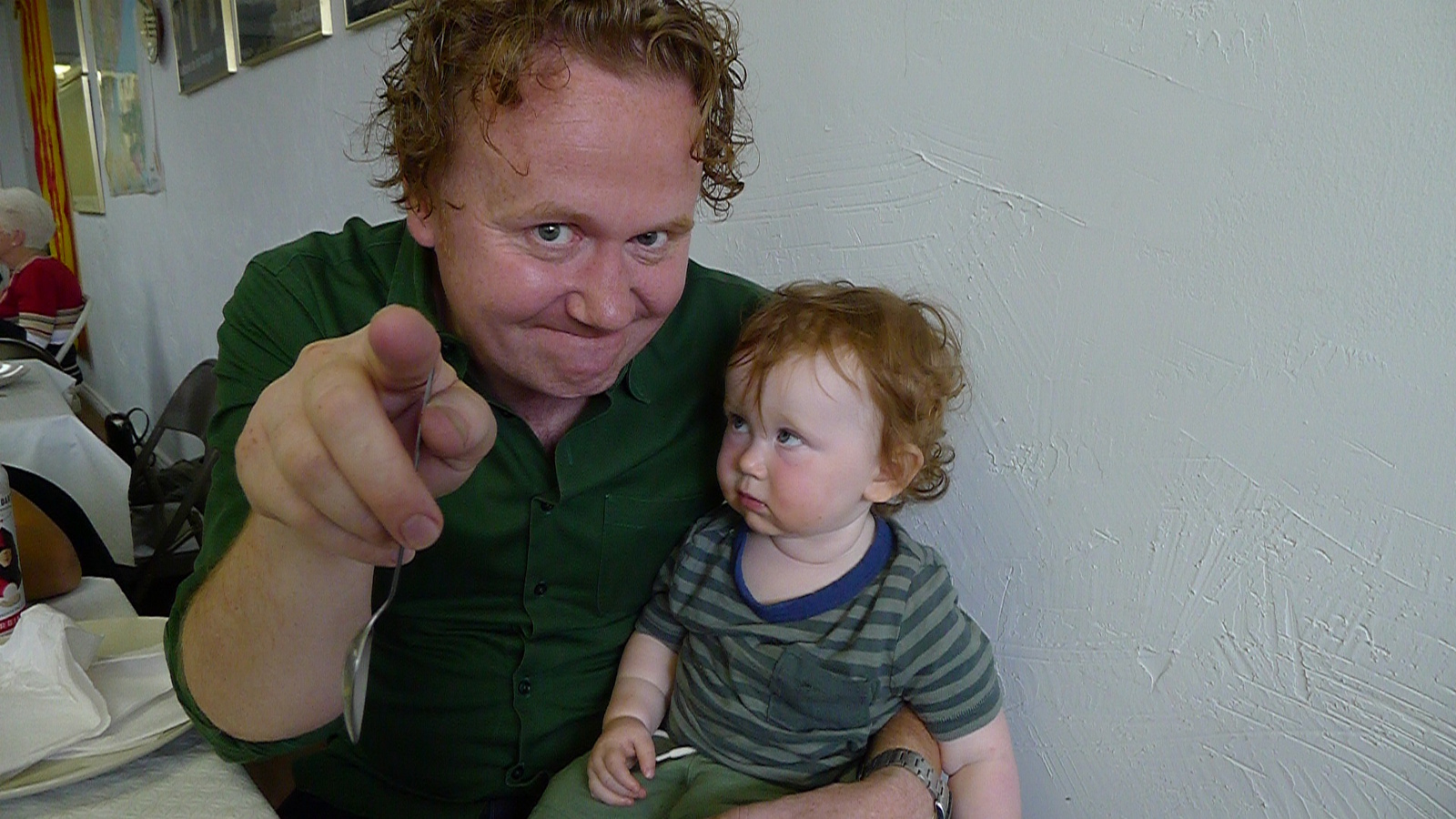As the best and by far the most demure food writer in the country, I tend to deaf-ear the smashed mirror funhouse yelps of food journalism, especially my own. But I read a lot of what is out there, perhaps more than the average cowboy or cookbook ghostwriter. Restaurant reviews extend an angle on lesser truths, snapshots for hotel drawers (after all, any drawer is a hotel drawer if you’re on your way out to experience a restaurant for the first time). But restaurant critics are often moved to impart a measure of wisdom on their quest to persuade: that is, a critic’s evaluation is intended to set out what people can expect to experience when they visit an establishment, but critics are known to press for more. This could be simply a question of filling space, or just for the purpose of adding superlative emphasis to positive and negative reviews.
In the case of Little More Than an Empty Shell, a zero-star review of John & Sons Oyster House appearing in the Globe and Mail on the 22nd of December, 2012, food critic Chris Nuttall-Smith takes a thesis-body-conclusion approach. Straight away the thesis material makes a robust claim of special understanding of both oysters and secrets of oysterhouse success in Toronto:
I’ve often thought that Toronto’s oyster houses have such strong personalities because of the simplicity of their signature foodstuff… an oyster is an oyster, a commodity, just like iced whole chickens and western red spring wheat.
So oysters are simple things, in this case much like chickens. Leaving this for a moment, let’s skip ahead to the oyster verdict on John & Sons, which does not appear until the critic gets round to discussing the menu in paragraph 8:
The oysters at the uptown John & Sons are good enough. There were 10 different kinds at last count. They’re expertly shucked, served on ice over metal oyster platters. They’re oysters, in other words. If oysters are all you want from an oyster house, this is a good place for you.
Strangely, the thesis now seems to have rethought itself somewhere on the journey. The “strong personality” conditioned by “simplicity” has been duly and empirically confirmed in the case of John & Sons, yet the critic hastens to faint-praise the discovery as if it should not redound to the credit of the restaurant. Moreover, the flat declamation “If oysters are all you want from an oyster house, this is a good place for you” effectively collapses the thesis outright. Here one must also question the critic’s eventual decision to deny the restaurant a single star despite finding no fault with their “signature foodstuff”, merely the bedrock of the enterprise. Have you ever read a steakhouse review that praised the quality of all steaks on the menu and concluded in a zero rating? If I were the steakhouse critic I might consider giving a zero if the server pointed a loaded gun in my face when I asked for more horseradish. Yet nowhere in the John & Sons review does the critic warn that patrons should fear for their safety, so the zero is a something of a sore-thumb curio.
But back to the “oysterhouse success secrets” thesis segment:
And every third restaurant in Toronto serves oysters now, often for far less than the oyster places charge. (To wit: The $1 oysters at the bar at Biff’s Bistro after 5 pm. They’re good there, too.) To make it as an oyster house, you’ve got to have a competitive advantage.
This is at least clumsy and wrongheaded: oyster houses are not in competition with restaurants moving one or two boxes of oysters per week, and it is bizarre to compare John & Sons’ (or anyone else’s) oyster program with a loss leading buck-a-shuck nostalgia act intended to hike erstwhile happy hour bar sales. That is, until one realizes this confusing mess is just an appetizer: the critic is setting us up for a name-droppin’ didactin’ logroll jamboree! Time to hear about Toronto’s leading oyster houses and what sets them apart.
The four deemed worthy of his examination are Rodney’s, Starfish, Black Hoof Raw Bar and Catch. Since the latter two opened in 2012, I was most curious to read the writing on the wall for oyster-biz truths only now declassified. But his descriptors seem to lack direction: in Starfish’s summary paragraph, the critic reveals that The Ceili Cottage patio is now outfitted with a yurt, as if this factoid adds to Starfish’s appeal as an oyster destination. Pressing on, we read that a “young, Westside vibe” cloaks the Black Hoof Raw Bar. I have no clue what is meant by a “Westside vibe.” Assuming it is not an improvised encomium furnished in haste by a besotted critic dusting for comparative heft (all for a restaurant he awarded only a single star ?!), I’m at a loss to identify it. Nor am I a gift-bearing member of Jeneration Agg. But I have resided in the west for many years, so at least I may be assured I am a carrier of the Westside pathogen, my own personal umami chakra.
But is not longevity in the Toronto restaurant scene a symptom of competitive advantage? The critic points out 25 years of Rodney’s, and surely Starfish is another example. Yet it is said that elephants make very little noise walking by, so presumably the critic failed to notice the other two behemoths moving across the radar during his assiduous research: Zee Grill and Oyster Boy.
Jac Eckhardt, 1960s Euro pop star, learned his trade from oceanliner chefs after leaving the Hague as a teenager. He opened Phoebe’s Oyster Bar with his wife Beth in 1981, preceding Rodney’s by several years; renamed it Zee Grill in 1998 to reflect an evolving kitchen, it continues to flourish atop the faded Mount Pleasant restaurant landscape and is still operated by the Eckhardts as an oyster bar with a mutable and imaginative menu. Starfish’s excellent progressive approach in their kitchen, thought unusual at the time in a world of just-the-basics oyster houses, had its antecedents in the Eckhardt’s successful run at Zee.
Oyster Boy, which opened as a restaurant in 2001 after years as an oyster caterer and wholesaler, remains the only Toronto restaurant where oyster justice is not only done but seen to be done: the shucker’s task can be observed clearly from any point in the dining room. Moreover, a guest needs only to pause briefly to take in the information, photography and art on the restaurant’s walls to come away with a good deal more oyster knowledge than was shared in the John & Sons review. And if this is not enough, shuckermudgeon legend Chris Field needs only 30 seconds or less at your table to change everything you ever believed about the oyster (I’ve never been able to break one minute, so we know the bar is set high).
So if the critic was so determined to put forward his theories as truth, why exactly did these outstanding oyster restaurants pass unmentioned even in unmentionable passing?
To counter the critic’s nameswinging ways round different restaurants but silence on John Belknap’s staff, I will take up the chore of naming one Jason Woodside, twice national shucking champion and former Oyster Boy co-owner, who was coaxed out of semiretirement by John & Sons. He can be seen in the photograph accompanying the review, and it is his sterling oyster work the critic scrambles to downplay. A lefty (enviable among oyster shuckers), Woodside designs and builds his own oyster knives and is instructing a new crop of shuckers, following Rodney’s and Oyster Boy legends before him.
But back to the review! It is now paragraph 10 and we haven’t heard about the kitchen fare yet. Still, the critic is coiled for another shot:
Yet apart from those two attributes – pleasant design, and oysters that are served well and taste like oysters – I don’t get John & Sons.
“Tastes like oysters” (along with the earlier “they’re oysters, in other words” and “a Kumamoto is a Kumamoto”) is one of those things like “feels like home” or “sounds like the Joker”, that are unnecessary as a means to keep the story moving. Was he afraid Woodside would forget himself and serve an oyster that tasted like pan-fried smelt? It should be noted that this also appeared, in slightly different form, during the critic’s June 2012 Black Hoof Raw Bar review: “The raw oysters are raw oysters, which comes as a relief.” If more guests expressed such continual relief that wholesale orders were regularly filled, it would be an easier business. But since the tautology also appears later in the John & Sons review in more direct fashion (“The smoked salmon and cream cheese plate was as good as you’d expect from a smoked salmon and cream cheese plate”), it may not have only to do with shellfish; so here we could perhaps forgive what seems a favoured stylistic conceit.
As for the food, an assessment of which begins at paragraph 11, a quick sidelong impression: why can’t critics look more often on the food experience the way a watchmaker looks at a watch or a gay paramedic looks at a case of priapism: dispassionate and analytical? You know, like Arendt meets Trudeau pere with the store-bought elan of Trudeau fils? Why are we too often left with a psychopath-up-the-garden-path emptiness? Let’s not forget this is the selfsame critic who wrote recently of an item on his best-of-2012 list: “My favourite, on principle, though I admit I haven’t tried it…” But all the same, I will not presume to counter anything said about food I have not yet experienced, except to observe an observation towards the end of the dreary account, when the critic flashes a strange touch of submission regarding the s’mores:
We didn’t eat them, we didn’t complain, the servers didn’t say anything when they cleared them. We didn’t get the sense that anybody cared.
This is spurious writing. Is there any server alive who becomes emotionally involved with a complaint you keep to yourself (aside from those in the film Minority Report)? Do servers walk back to the coffee station and say things to their colleagues like “I’m worried that table four were listening in a very concerned manner”, or maybe “answer made it none: yet once methought it lifted up its head and did address itself to motion, like as it would speak” and so forth? When I sit for a meal in a restaurant I tend not to rely on physiognomy to get me through the night — this from a chronic stutterer. If the critic did not open his mouth to comment on the unwelcome s’mores, why then should we hear about it in his review? Dialogue between server and guest can often result in something readable. But no matter — I will try the s’mores myself to study their slack-jaw effect on the room.
Finally, if you’re going to write about an oyster house, is it too much to ask that you should know something about oysters? The critic wishes us to believe in the simplicity of the oyster — he wavers quickly enough, but still hangs onto it throughout — and this simply will not hold. Readers must be disabused forthwith of even the tiniest notion that the Ostreidae family are simple folk. They are not, never were and never will be. They are unique and alarmingly complex at every turn, even among their bivalve mollusk brethren. The romance of connection between humans and the ocean is not a longing for simplicity. If it were, would the growers and shuckers of the world be subject to the avalanche of diverse questions and choices each day an oyster lives and dies?
As for the laconic “iced whole chickens” blend, just one small difference among thousands: when alive, are iced whole chickens known to leave their cages at night to sweep and hose down the coop and barn areas? Do free-range chickens repair damages to the pasture fenceline? Interesting, because before industrial pollution, Chesapeake oysters were able to filter the entire volume of the bay in under a month. And what of Kate Orff, the landscape architect who has set in motion a crazily ambitious plan to rescue the toxic waters of New York City’s Gowanus Canal and Governors Island by seeding millions of oysters into the system? In addition, by exploiting the oyster’s ability to agglomerate into reef structures, the project will attempt nothing less than the creation of “a new public landscape for New York Harbour.” The idea is simple. Oysters are not.
(And, incidentally, whoever said the Globe lacks subtlety? The link to a news clip on this historic project can be found on the very webpage of the John & Sons review. Kate Orff’s “Oystertecture” TED presentation can also be found here).
So to sum up an attempt at a spirited examination of a most mean-spirited review: if not simplicity, where does competitive advantage start for an oyster house? The critic concludes that all John & Sons has going for it is the Yonge and St Clair location. Since this column features a clutch of review quotes, let’s quote a different review from one of the most different of reviewers on the subject of building an advantage into your brand. We’ll even bold this one, composed by the late New York Magazine critic Seymour Britchky:
Running a restaurant has little kinship with making great art, but there are similarities. Unless the enterprise is informed by someone’s tastes or preferences or passions or vision, it will fall flat. It may make money, but it won’t leave a mark.
Passion is not a carbunkle on the ass of a zero-star restaurant. It is a wild-card element of survival and achievement, unessential but invaluable when in play. The three dozen or so high-volume shucking veterans in Canada are passionate people; a number possess both passion and vision. Three — John Belknap, Mark Moore and Woodside — are involved in John & Sons. The restaurant’s likelihood of leaving a mark on the Toronto scene is looking all the better for the passion on staff, which one hopes will help them recover quickly from the artless Christmas surprise kicked under their tree by Chris Nuttall-Smith.
 Anthony Wing got a Shigoku box for Christmas. He is not affiliated with John & Sons Oyster House. To browse his collection of oyster-related articles at Good Food Revolution, click here.
Anthony Wing got a Shigoku box for Christmas. He is not affiliated with John & Sons Oyster House. To browse his collection of oyster-related articles at Good Food Revolution, click here.









Well done!
An oyster is an oyster is an oyster. What does that make a rose? Methinks you chewed him a new *hole. What the hell does he mean by “it may make money, but it won’t leave a mark”? Aside from ticking off fans of the German denomination, it’s like saying no one goes there anymore because it’s too crowded. This concludes my review of a review of a review.
Like many of us we have all been a victim to bad reviewers with unsophisticated tastebuds equal to their food knowledge. The qualifications for most reviewers only requires an english degree while the true chefs never finish their education!!
Well, Dr. Wing, I’ve read thinner PhD theses. Congratulations on this erudite evisceration!
[NB. This comment has been edited for language. MJ Ed.]
This has got to be the most asinine of openings to any restaurant review that I’ve seen in my life:
“Presuming they’re well-sourced and fresh, well shucked and un-futzed with, an oyster is an oyster, a commodity, just like iced whole chickens and western red spring wheat.”
With such a narrow, uneducated and virtually unredeemable perspective, there does not seem much hope for this Nuttal fellow. What a jackass. It’s nigh impossible to imagine that he has a clue of which he speaks; once he states his claim that an oyster is an oyster is a commodity, he may as well have shot himself in the eye and called himself a gunslinger.
To tar and feather this writer would be an act of kindness, for the writer and for the whole of Toronto. What a glorious [NOT A VERY NICE WORD].
[NB: This comment has been edited for language – MJ Ed.]
Well said, Tony. And I thought Joanne Kates was a [NOT VERY NICE WORD].
The man has no knowledge whatsoever about oysters and if they were so simple why do I answer so many questions every shift about them?
I really wish I could see his point of view but I can’t get my head that far up my ass……
A quick note on comments at Good Food Revolution. Please keep them constructive and avoid personal attacks. They are meant as a forum for dialogue and the exchange of ideas.
What a tour de force Anthony. Among the best and funniest food articles I have ever read.
Amazing. I can’t stop reading this sentence and wishing the Globe had a similar style:
[W]hy can’t critics look more often on the food experience the way a watchmaker looks at a watch or a gay paramedic looks at a case of priapism: dispassionate and analytical?
Well done Tony, definitely one of the dumbest and lazy reviews ever, thanks for the chuckles.
the oyster was like you know um very oyster like and there are also many other um oyster houses in toronto that also serve oysters that taste like oysters…(insert wikipedia fact)…oysters were once served by Romans to increase libido and contain zinc to boost the immune system zzzz snore…yada yada rodney…zzzz….St. Lawrence Market…zzz halifax…good with horseradish…opposite of charcuterie zzzz
[This comment has been edited for language. MJ Ed.]
Chris Nuttall-Smith: next time just eat a [NOT A VERY NICE WORD]
[this comment has been edited for language. MJ Ed.]
LOFL. Glad to see that tent have that saying out east as well!
I am not sure Nuttal would be interested as [NOT A VERY NICE WORD] probably isn’t considered a commodity, like say, iced whole chickens or oysters are. It’ll fall outside of his realm of experience. That said, he might eat some [NOT A VERY NICE WORD] But he will probably give it a bad review.
Touche!! Passionate words from a passionate man, articulate as always…a gift many “writers” could only dream of.